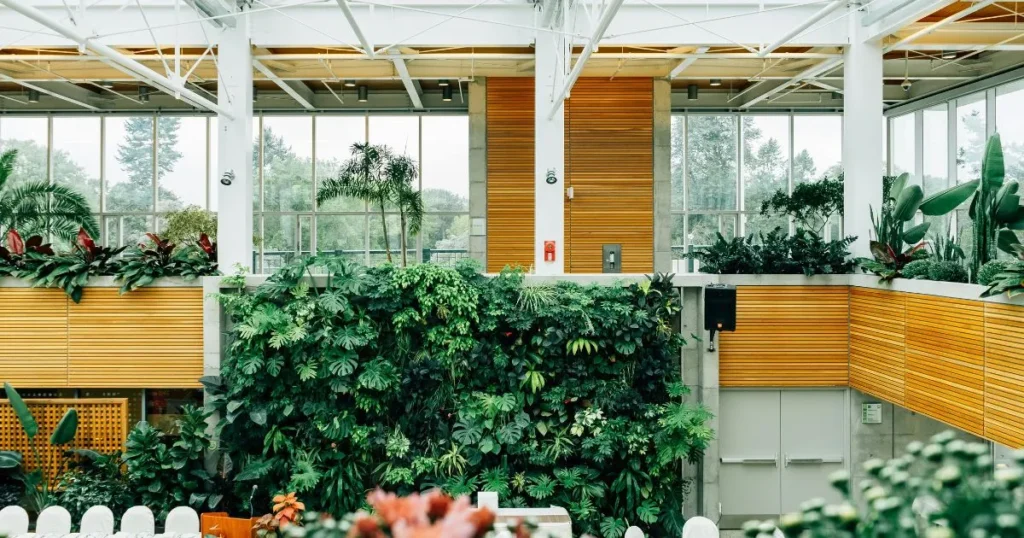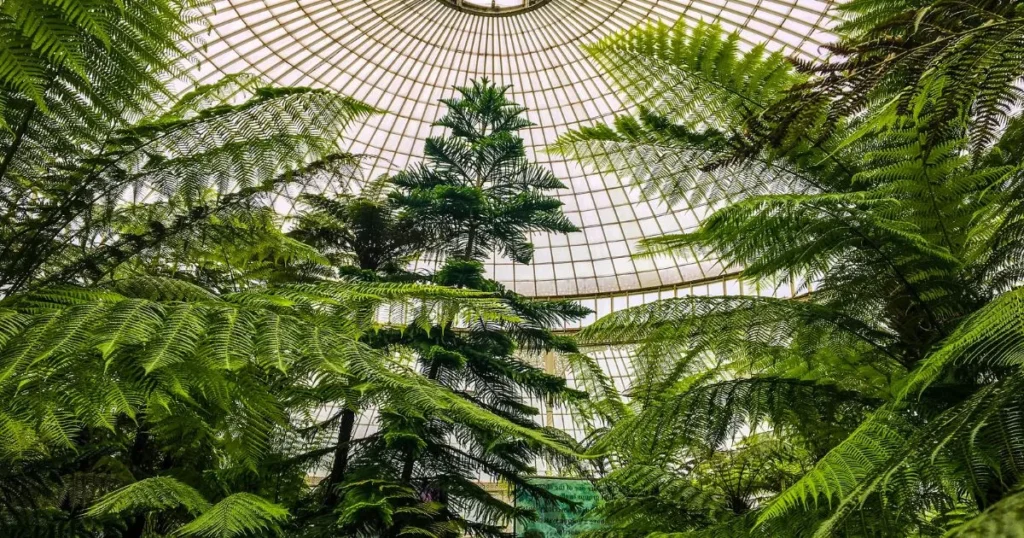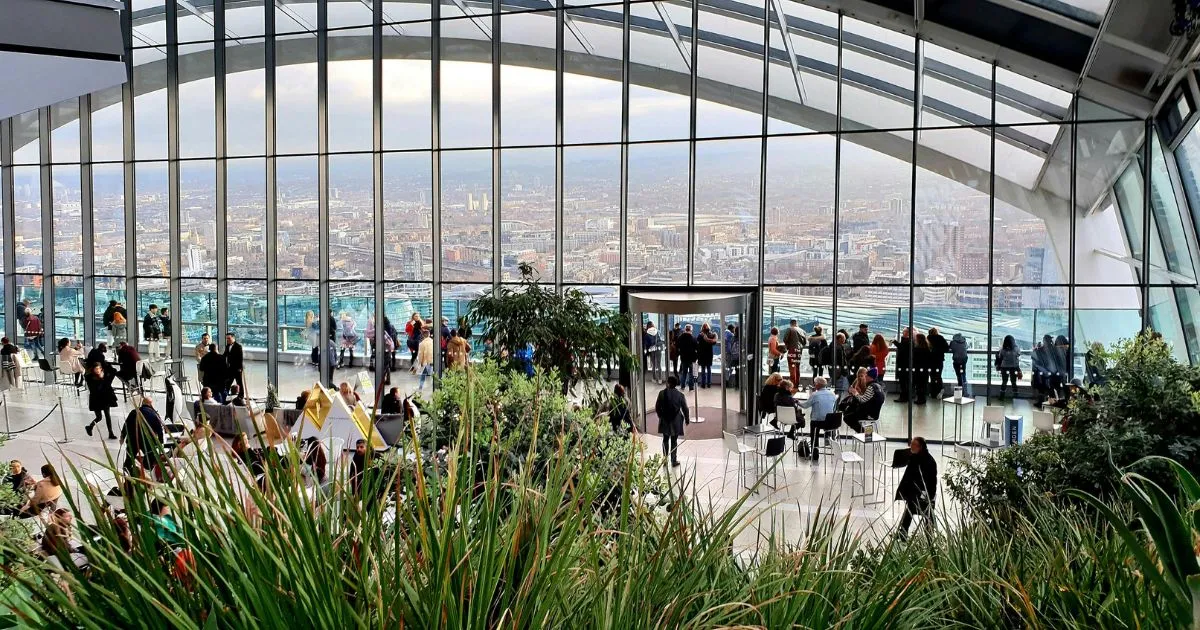Table of Contents
Conservatories and botanical gardens are sanctuaries that offer a serene escape from urban sprawl, nurturing the human connection with nature while advancing scientific knowledge. These green spaces are more than just picturesque settings; they are living museums and research hubs that play a critical role in conservation, education, and cultural enrichment.
What Is a Conservatory?
A conservatory is a glass-enclosed structure designed to house and protect plants, often from varying climates. These architectural marvels are as much about aesthetics as they are about functionality, typically featuring a controlled environment that mimics the natural habitats of the flora they shelter. From tropical rainforests to arid deserts, conservatories create microclimates that enable exotic plants to thrive, irrespective of local weather conditions.
Key Features of a Conservatory
- Glass Architecture: Allows maximum sunlight to penetrate while maintaining a regulated internal climate.
- Climate Control: Heating, cooling, and humidifying systems to replicate diverse ecosystems.
- Specialized Plant Collections: Rare orchids, carnivorous plants, and succulents are common exhibits.
- Educational Displays: Panels, labels, and interactive tools educate visitors about plant species, their origins, and ecological importance.
Conservatories also serve as a showcase of horticultural artistry, blending the science of plant care with visually stunning displays that captivate visitors.
What Is a Botanical Garden?
A botanical garden is an expansive, curated outdoor space dedicated to the cultivation, display, and study of plants. These gardens often include themed sections such as rose gardens, herb gardens, and arboretums. Unlike conservatories, botanical gardens utilize natural light and regional climates, although they may include greenhouses or conservatories within their grounds.
Key Features of a Botanical Garden
- Open Landscapes: Wide areas for native and exotic plants to grow naturally.
- Research Facilities: Laboratories for plant science and conservation research.
- Public Engagement: Guided tours, workshops, and community programs.
- Biodiversity Hotspots: Emphasis on preserving endangered and rare plant species.
Botanical gardens often feature seasonal displays, providing a year-round attraction for visitors and an ever-changing tapestry of flora.
The Role of Conservatories and Botanical Gardens
Conservation
Both conservatories and botanical gardens serve as refuges for endangered plant species. By cultivating plants outside their native habitats, these institutions act as biological insurance against extinction. Seed banks and propagation programs ensure that species can be reintroduced into the wild if necessary. Furthermore, their efforts contribute to protecting global biodiversity in an era of environmental change.
Education and Public Awareness
Educational initiatives are central to the mission of conservatories and botanical gardens. From school trips to adult workshops, they inspire a deeper understanding of botany, ecology, and sustainability. Visitors learn about:
- The ecological roles of plants.
- The impact of climate change on biodiversity.
- The importance of conservation efforts.
Interactive exhibits, guided tours, and community outreach programs further enhance the educational experience.

Research and Innovation
Botanical gardens often collaborate with universities and research institutions to study plant genetics, disease resistance, and potential medicinal properties. This research has far-reaching implications, from agricultural advancements to pharmaceutical developments. By acting as living laboratories, these institutions bridge the gap between theoretical science and practical application.
Cultural and Recreational Value
These green spaces are also cultural landmarks, reflecting the artistic and historical influences of their regions. They serve as venues for events, exhibitions, and recreational activities, enhancing community well-being and fostering cultural exchange. Many gardens host festivals, musical performances, and seasonal events that attract diverse audiences.
Notable Conservatories and Botanical Gardens Around the World
The Royal Botanic Gardens, Kew (United Kingdom)
A UNESCO World Heritage site, Kew Gardens houses over 50,000 living plants. Its iconic Palm House and Temperate House are architectural masterpieces that host a vast collection of tropical and temperate species. Visitors can explore its extensive seed bank and herbarium, which are invaluable resources for global conservation efforts.
The Singapore Botanic Gardens (Singapore)
Known for its National Orchid Garden, this botanical garden is a tropical oasis in the heart of Singapore. It is Asia’s first UNESCO World Heritage Site and boasts an array of tropical flora that captivates millions of visitors annually. Its integration of traditional landscapes with modern design exemplifies the harmony between nature and urban life.
The Eden Project (United Kingdom)
Featuring massive biomes, the Eden Project replicates diverse ecosystems, including rainforests and Mediterranean environments. It is a hub for environmental education and sustainability. Visitors can experience immersive environments while learning about renewable energy and sustainable practices.
The United States Botanic Garden (Washington, D.C.)
One of the oldest botanical gardens in North America, it features conservatories, outdoor gardens, and a medicinal plant garden. Its mission focuses on connecting people with plants and fostering a greater appreciation for the natural world.
Gardens by the Bay (Singapore)
This modern marvel combines cutting-edge technology with lush greenery. Its Supertree Grove and Flower Dome conservatory are iconic attractions. Gardens by the Bay exemplifies how technology and nature can coexist to create breathtaking landscapes while promoting sustainability.
Challenges Faced by Conservatories and Botanical Gardens
Despite their invaluable contributions, conservatories and botanical gardens face several challenges:
- Climate Change: Rising temperatures and erratic weather patterns disrupt plant growth and threaten biodiversity.
- Funding: Many institutions rely on donations and government support, which can be unpredictable. Securing stable funding remains a constant challenge.
- Pests and Diseases: Increased globalization has led to the spread of invasive species and pathogens, putting plant collections at risk.
- Urban Development: Encroaching cities can limit the expansion and preservation of these spaces. Balancing urbanization with conservation is an ongoing struggle.
- Public Engagement: Maintaining relevance and attracting diverse audiences requires innovative programs and consistent outreach efforts.
Future Directions and Innovations
The future of conservatories and botanical gardens lies in integrating technology and sustainability. Emerging trends include:
- Vertical Gardens: Maximizing space by growing plants on walls and vertical structures.
- Smart Systems: Using IoT and AI for climate control and plant monitoring to ensure optimal growing conditions.
- Sustainable Practices: Water recycling, renewable energy, and organic pest management to minimize environmental impact.
- Virtual Engagement: Online tours and educational programs to reach a global audience, making these green spaces accessible to all.
- Community-Centric Designs: Creating interactive spaces where visitors can actively participate in conservation activities and learn hands-on.
How to Support Conservatories and Botanical Gardens
Individuals can contribute to the sustainability of these institutions through:
- Volunteering: Assisting with garden maintenance, educational programs, or research.
- Memberships: Becoming a member to enjoy exclusive benefits while supporting operations.
- Donations: Funding specific projects or general upkeep to help these institutions thrive.
- Advocacy: Promoting the importance of these spaces within communities and on social media platforms.
- Participation: Attending events, workshops, and guided tours to deepen your connection with nature and inspire others to do the same.
By actively supporting conservatories and botanical gardens, individuals can contribute to the preservation of global biodiversity and the promotion of environmental stewardship.

Frequently Asked Questions (FAQ)
What is the main purpose of a conservatory?
The main purpose of a conservatory is to protect and cultivate plants, often exotic or climate-sensitive species, in a controlled environment.
How do botanical gardens contribute to conservation?
Botanical gardens conserve biodiversity by preserving rare and endangered plant species, maintaining seed banks, and conducting research for habitat restoration.
Are conservatories and botanical gardens the same?
No, conservatories are typically enclosed glass structures for specific plant collections, while botanical gardens are expansive outdoor spaces with diverse plant displays and research facilities.
How can I support my local botanical garden?
You can support through volunteering, donations, memberships, and participating in community programs or events hosted by the garden.
What are some famous botanical gardens around the world?
Notable examples include Kew Gardens (UK), Singapore Botanic Gardens, and the Eden Project (UK).
Why are botanical gardens important for urban areas?
Botanical gardens in urban areas provide green spaces for relaxation, education, and environmental awareness, improving quality of life for city dwellers.

